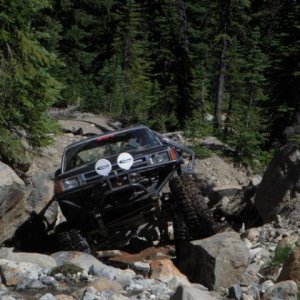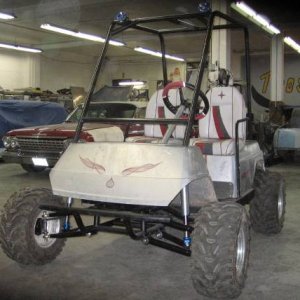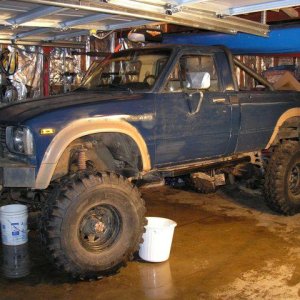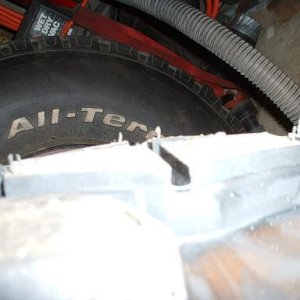Yes sir. It's the mill in Arkansas. When my wife gets done a few years, going to try and transfer to the Decatur mill. That way I will be closer to the parks and live closer to the people I usually ride and hang out with. There are few guys by me that have buggies, but I hardly ever go with them.zukimaster said:Do you work for Nucor?
-
Help Support Hardline Crawlers :
You are using an out of date browser. It may not display this or other websites correctly.
You should upgrade or use an alternative browser.
You should upgrade or use an alternative browser.
Wiring diagram review
- Thread starter e4cutler
- Start date
ftoy516
NOT PART OF THE HERD!
Dirt700 said:What is ideal wire size for say:
Fans
Lights
Fuel pump
Starter solenoid
Ignition switch
This may Help. You will need to know the Amp draw of some of the items to make those decisions.
https://www.westmarine.com/WestAdvisor/Marine-Wire-Size-And-Ampacity?cm_mmc=PS-_-Google-_-Dynamic%2520Search%2520ADs-_-Null&adpos=1t2&creative=99997524844&device=c&matchtype=b&network=g&mrkgadid=2353620585&mrkgcl=481&rkg_id=h-8f4d621c190782574f7f3720af79b028_t-1518650191&gclid=Cj0KCQiA2Y_UBRCGARIsALglqQ1d23u9WCtHj8P0vnKyEad67zIi039yJCMvwo_jj4XG4y2gHC24KOAaAkdYEALw_wcB
Also some descent info.
https://www.westmarine.com/WestAdvisor/Marine-Wire-Terminal-Tech-Specs
ftoy516
NOT PART OF THE HERD!
Something like this will help keep it nice and clean. You can also get this fuse block with negative connections.

Sent from my iPhone using Tapatalk

Sent from my iPhone using Tapatalk
I have the same one on my Amazon wish list.ftoy516 said:Something like this will help keep it nice and clean. You can also get this fuse block with negative connections.
Sent from my iPhone using Tapatalk
Thanks for the wiring help, im trying to find amp draw on my fans.
I think lights and radio I will do 14awg, trans fan says only 4.8 amp draw I figured it would be more than that
ftoy516
NOT PART OF THE HERD!
No problem.
I used the 12 slot fuse block with Ground terminals, that way i could easily ground items to the block without running them allover the place. On this Fuse Block it gets a Ground directly to the Chassis.
Blue Sea Systems #5026
Also ,
If i had any other advice it would be to make it as easy to work on as you can that way it is easier to fix on the trail....the last thing you want to have to do is tear the whole rig apart just to get to the fuse panel, just to check a fuse, or a relay.
Taking your time to do a good clean wiring job WILL pay off in the long run when you have to start working on it in the future.
I used the 12 slot fuse block with Ground terminals, that way i could easily ground items to the block without running them allover the place. On this Fuse Block it gets a Ground directly to the Chassis.
Blue Sea Systems #5026
Also ,
If i had any other advice it would be to make it as easy to work on as you can that way it is easier to fix on the trail....the last thing you want to have to do is tear the whole rig apart just to get to the fuse panel, just to check a fuse, or a relay.
Taking your time to do a good clean wiring job WILL pay off in the long run when you have to start working on it in the future.
I'm trying to wire this one the correct way. The buggy I just sold was a mess when I got it.ftoy516 said:No problem.
I used the 12 slot fuse block with Ground terminals, that way i could easily ground items to the block without running them allover the place. On this Fuse Block it gets a Ground directly to the Chassis.
Blue Sea Systems #5026
Also ,
If i had any other advice it would be to make it as easy to work on as you can that way it is easier to fix on the trail....the last thing you want to have to do is tear the whole rig apart just to get to the fuse panel, just to check a fuse, or a relay.
Taking your time to do a good clean wiring job WILL pay off in the long run when you have to start working on it in the future.
Going to try and ground all the electronics at the mounting point, to save on the wires in running. I plan on putting fuse block and relays on a piece of and plastic and mounting it on the firewall
ftoy516
NOT PART OF THE HERD!
I would recommend checking out DelCity for all of your wiring needs. This is a great source for all things 12V and orders over $99 ship free....wiring a buggy that will add up in the blink of an eye.
Delcity will have almost everything you will need, from wire, push buttons, relays, carling rockers, kill switchs, rockers, battery cable, terminals ect.....basically anything you can dream of 12v
delcity.net
Delcity will have almost everything you will need, from wire, push buttons, relays, carling rockers, kill switchs, rockers, battery cable, terminals ect.....basically anything you can dream of 12v
delcity.net
Dirt700 said:trans fan says only 4.8 amp draw I figured it would be more than that
Remember this is continuous amp draw. in order to start an electrical motor, you need way more than the continuous number.
I think I am going to use 8 awg for all 3 fans and fuel pump just to be safeBebop said:Remember this is continuous amp draw. in order to start an electrical motor, you need way more than the continuous number.
Those that are using 200-300 amp fuses right after the battery, do you have any problems with them blowing when winching?
I'd like to add a fuse right after the battery but Warn specs show ~450 amp draw at max load - I didn't think a 300 amp fuse would be enough.
I'd like to add a fuse right after the battery but Warn specs show ~450 amp draw at max load - I didn't think a 300 amp fuse would be enough.
ftoy516
NOT PART OF THE HERD!
I am running a 175A fuse right after the battery, HOWEVER, my winch is wired directly to the battery. Which is what Warn said should be done.
At first I wanted to run my battery Positive from a jumper terminal and just ground the winch to the chassis right beside the winch, in efforts to not have so much large wire all over the whole place.
When i called and talked to Warn they informed me that would NOT be a good idea to ground the winch to the Chassis near the battery because if something goes wrong it could burn up all the ground connections to the wiring harness.
Also the winch needed to have Positive power DIRECTLY from the battery. When the winch is grounded to the chassis all of the current is trying to find its way back to the battery, and under a heavy current load during hard usage it could be high enough to be an issue with the other electrical grounds in the vehicle. I was not willing to risk that.
I have not had any issues with my fuse being beside the battery.
At first I wanted to run my battery Positive from a jumper terminal and just ground the winch to the chassis right beside the winch, in efforts to not have so much large wire all over the whole place.
When i called and talked to Warn they informed me that would NOT be a good idea to ground the winch to the Chassis near the battery because if something goes wrong it could burn up all the ground connections to the wiring harness.
Also the winch needed to have Positive power DIRECTLY from the battery. When the winch is grounded to the chassis all of the current is trying to find its way back to the battery, and under a heavy current load during hard usage it could be high enough to be an issue with the other electrical grounds in the vehicle. I was not willing to risk that.
I have not had any issues with my fuse being beside the battery.
ftoy516 said:I am running a 175A fuse right after the battery, HOWEVER, my winch is wired directly to the battery. Which is what Warn said should be done.
At first I wanted to run my battery Positive from a jumper terminal and just ground the winch to the chassis right beside the winch, in efforts to not have so much large wire all over the whole place.
When i called and talked to Warn they informed me that would NOT be a good idea to ground the winch to the Chassis near the battery because if something goes wrong it could burn up all the ground connections to the wiring harness.
Also the winch needed to have Positive power DIRECTLY from the battery. When the winch is grounded to the chassis all of the current is trying to find its way back to the battery, and under a heavy current load during hard usage it could be high enough to be an issue with the other electrical grounds in the vehicle. I was not willing to risk that.
I have not had any issues with my fuse being beside the battery.
That's similar to how I have mine wired now but it makes me a little nervous having a long power wire to the winch without a fuse.
In most of the wiring diagrams in this post, the winch is shown after the fuse, I'm just wondering if people are blowing fuses with a winch wired to a 200-300 amp fuse?
TBItoy
Well-Known Member
9T3XJ said:That's similar to how I have mine wired now but it makes me a little nervous having a long power wire to the winch without a fuse.
In most of the wiring diagrams in this post, the winch is shown after the fuse, I'm just wondering if people are blowing fuses with a winch wired to a 200-300 amp fuse?
I never did. you can get up to 500A Mega fuses.
Sent from my iPhone using Tapatalk
hokie_yj
Well-Known Member
That max current will be with the winch at max load and damn near stalled out. I'm running a M8000 and it's 435A at 8000# and 4.8 ft/min line speed.
I'll be putting this fuse holder directly after my battery switch, right now the plan is to run a 500A ANL fuse, but I may downsize to about a 400 or so.
https://www.bluesea.com/products/5503/ANL_Fuse_Block_with_Insulating_Cover_-_35_to_750A
Then from there it will go to this bus bar that rated at 1000A continuous. And everything, including the winch will feed from there.
https://www.bluesea.com/products/1990/PowerBar_1000_-_8_3_8in_Terminal_Studs
I would think 200-300 amps would be cutting it close. Likely it will never blow, but if you're pulling hard with your winch you'll be pushing that. If it were me I would up it to 350-450, assuming your wiring is capable of handling that kind of current.
I'll be putting this fuse holder directly after my battery switch, right now the plan is to run a 500A ANL fuse, but I may downsize to about a 400 or so.
https://www.bluesea.com/products/5503/ANL_Fuse_Block_with_Insulating_Cover_-_35_to_750A
Then from there it will go to this bus bar that rated at 1000A continuous. And everything, including the winch will feed from there.
https://www.bluesea.com/products/1990/PowerBar_1000_-_8_3_8in_Terminal_Studs
I would think 200-300 amps would be cutting it close. Likely it will never blow, but if you're pulling hard with your winch you'll be pushing that. If it were me I would up it to 350-450, assuming your wiring is capable of handling that kind of current.
ftoy516
NOT PART OF THE HERD!
9T3XJ said:That's similar to how I have mine wired now but it makes me a little nervous having a long power wire to the winch without a fuse.
In most of the wiring diagrams in this post, the winch is shown after the fuse, I'm just wondering if people are blowing fuses with a winch wired to a 200-300 amp fuse?
I feed BOTH the Positive and Ground winch cables through vinyl tubing to help prevent chafing...that way it had some extra protection.
My Battery is located behind the passenger seat, so the cables are LONG...from the front of the chassis to where its located its about 8 ft or so. I wish it was shorter, but I located behind the passenger seat for weight reasons.
You can get that stuff at Lowes or Homedepot. It is a little bit hard to get threaded through the vinyl tubing, but i just used a soapy water mixture and pushed it through...and Heat shrink the terminal ends after i had it totally feed into the vinyl tube.
If you try this it will take some patience.









